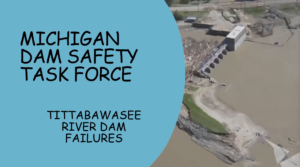Governor Little’s Salmon Workgroup Final Recommendations Released
Governor Little’s Salmon Workgroup Final Recommendations Released
In early January, the Governor’s Office released the Salmon Workgroup’s final policy recommendations report. It prominently acknowledged the desire Idahoans have for “abundant, sustainable, and well-distributed” populations of wild salmon and steelhead, beyond achieving simple Endangered Species Act (ESA) delisting criteria.
The Workgroup established that the State of Idaho must fulfill several overarching principles when acting on their recommendations: recognize the importance of salmon to Tribal people and the need to honor treaty obligations; make Idaho’s river communities and economies that rely on the fish whole; support actions that go beyond current recovery efforts; and restore ecological functions on which salmon and steelhead depend.
By establishing that recovery must lead to “healthy and harvestable” populations of salmon, the State of Idaho took a commendable step. The Workgroup directly associated their healthy and harvestable objective with the Columbia Basin Partnership’s high-end goals, noting that the goals represent an “equivalent to empirical estimates of abundance under conditions when populations were previously considered to be reasonably healthy.”
High-end goals for many populations are based on estimates of 1950’s abundance, just before the Lower Snake River dams were installed. The report also noted that smolt-to-adult return rates (SAR) of 2-6% with a 4% average are an important metric when measuring recovery success. The adoption of this metric better aligns Idaho’s position with regionally accepted recovery science.
The Workgroup report is not a recovery plan, but merely a set of consensus recommendations, meant to better inform the State of Idaho’s position in future recovery efforts. The recommendations themselves do not significantly differ in many areas from already established recovery actions. The report chose to center recommendations around the “4 H’s” framework of issues facing salmon recovery: habitat, harvest, hatchery, and hydrosystem. Categories for Ocean and Predation were also added.
The mission of the Workgroup was explicit to develop recommendations through a collaborative, consensus-driven, public process to restore abundant, sustainable, and well-distributed populations of salmon and steelhead in Idaho. By its own admission, this report falls short of that goal.
“While there were some great successes that came from this workgroup, such as adopting the recovery measures of the Columbia Basin Partnership, this 18-month process must be seen as inadequate. If the Governor adopts this as Idaho’s recovery plan, these fish are on the same path to extinction as they are now. Bold action that includes breaching the Lower Snake River Dams is paramount to any recovery plan. We recognize the hard work of each individual representative on this Workgroup, and encourage that the exchange of dialogue amongst all constituents continues beyond the release of this report to ensure that every Idahoan and Tribal member is made whole during the true recovery process.” – IRU Executive Director Nic Nelson
The dire state of Idaho’s salmon and steelhead still requires urgent recovery action, just as it has for decades. Many complex factors influence salmon survival during their wide-ranging life cycles, yet potential recovery action is fairly straightforward. Established science has made clear for decades that the only realistic path towards recovery is the restoration of the mainstem river habitat severely degraded by dams and reservoirs.
If the State is genuine in its desire for abundant, sustainable, and well-distributed salmon and steelhead, recovery plans involving Lower Snake River dam breaching and river restoration must be central to future regional gatherings.
Idaho will have an opportunity to incorporate the Workgroup’s recommendations in the upcoming Columbia Basin Collaborative, a four-state recovery initiative that will pull in Tribal sovereigns and regional stakeholders from across the region.
Read the Workgroup Recommendations
Read the CBP report


